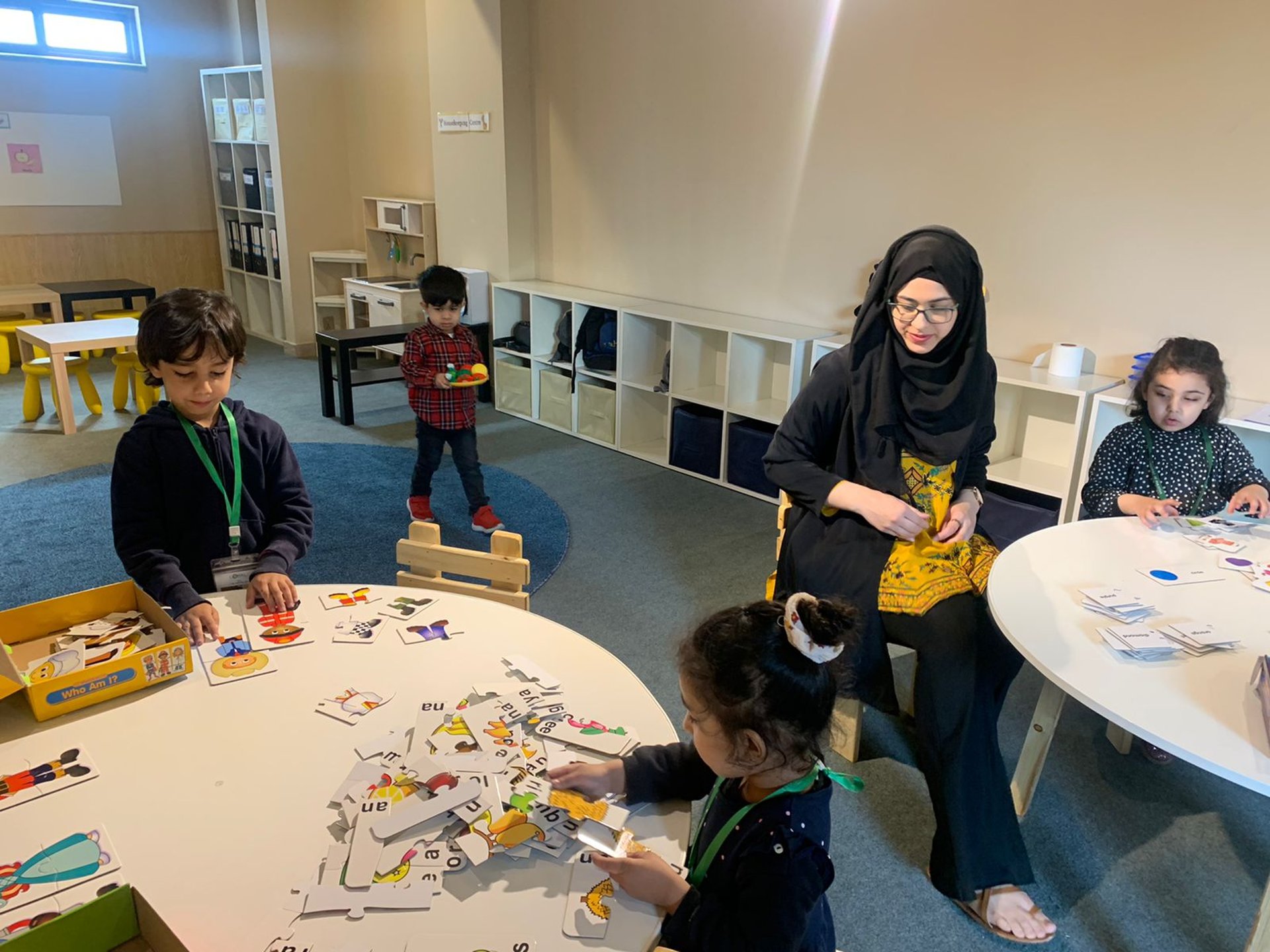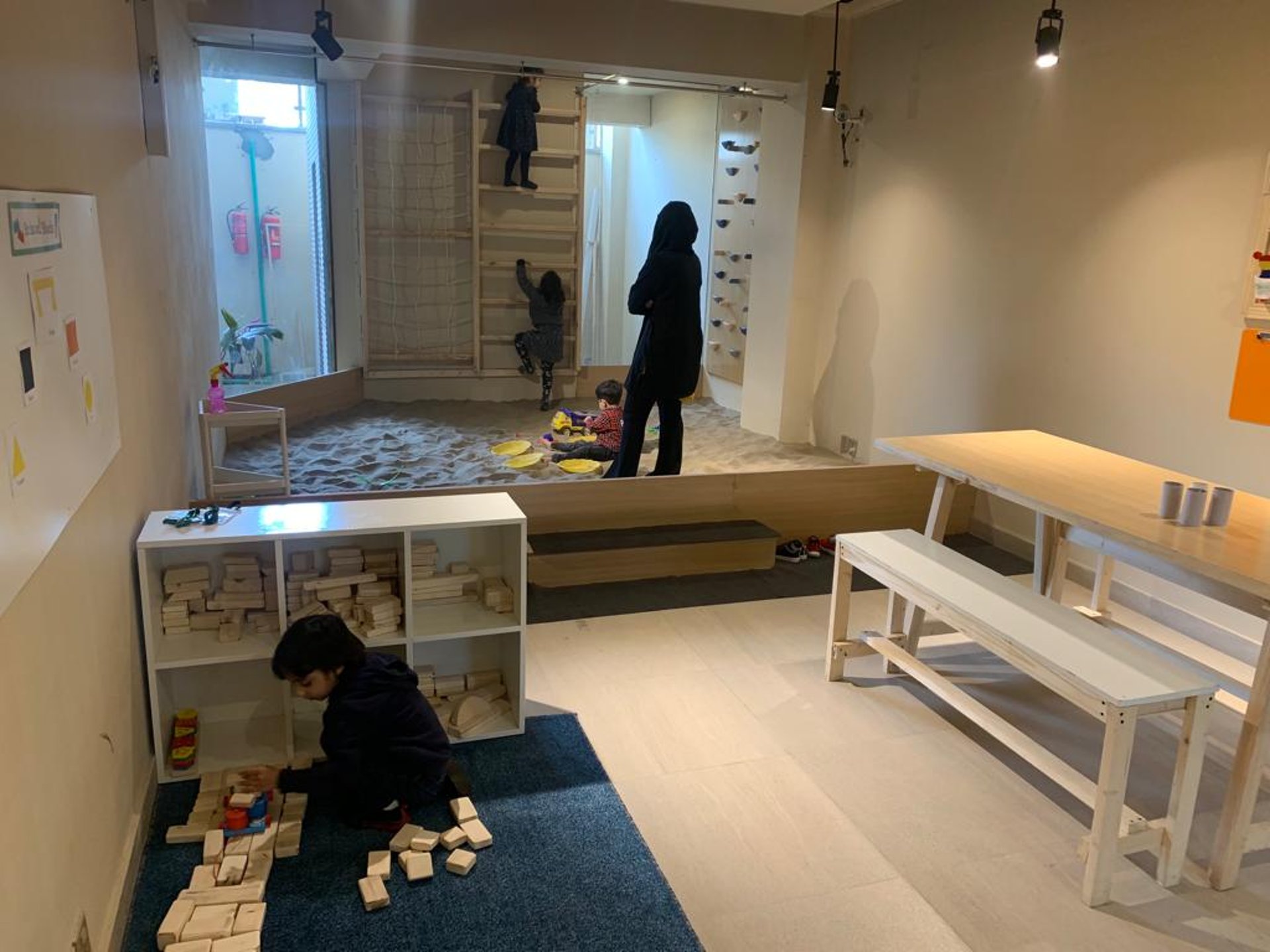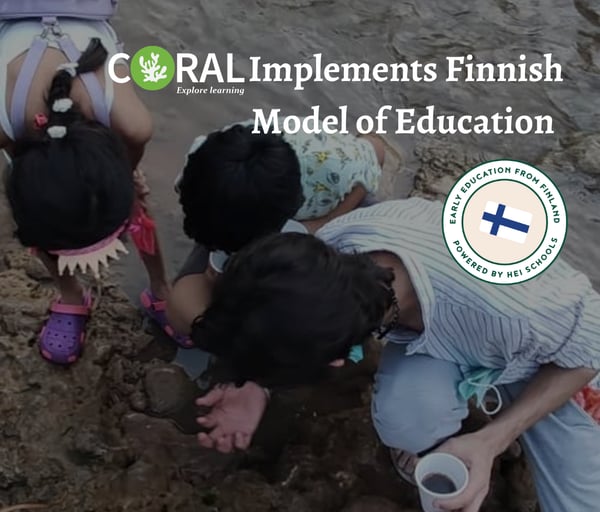
Our Goals
To prepare students to be independent life-long learners
To promote creativity, confidence and determination
To develop self esteem and mutual respect
To show that if we are positive we can achieve more
Why Finland's model of Education?
Over the past decades, the Finish education system has meticulously been tested with marvelous results.
It includes the newest learning models, philosophies, and practices with continuous development to meet the finest standards in education.
Learning Forms of Expression:
Why choose us?
Exploring and Interacting with the World Around us:
Understanding the World we live in:
Practicing a Healthy way of living:
Crafts and Visual expression, Verbal and Physical expression, Musical activities.
Linguistic skills, Mathematical skills, Science and Environmental education
Cultural Competencies, Ethics Education
Socio-emotional competencies, Physical well-being
Everybody learns best when steered by their own interests, which is why children's interests play a central role in their education.

Building Resilience In Children By
Finland is known for the concept of sisu, which is the courage to move forward when things get tough.
It is the inner strength you need to get back up when something has knocked you down. While it is a universal human quality that we all have within us, we need to be able to access it.
- Working together
- Working through discomfort and mistake
- Working against the odds as a team
By discovering their own sense of sisu, children learn that we are all in this together.
Our Learning Spaces
Less visual stimulation leads to better learning
Quieter spaces promote language learning & information processing
Natural elements foster focus & well-being
#Conducive learning
It goes without saying that our surroundings affect us consciously and subconsciously. The environment we are in can motivate us to focus on our tasks or cause distractions that will make us lose concentration. For students, the environment where they learn and study affects their productivity.
As children spend a significant 4-5 hours of their time daily in their classrooms, facilitators at Coral preschool, ensure that children under their care have a conducive environment that promotes learning.
Creating a space that promotes learning amongst students does not just benefit the students, facilitators also find it easier and more enjoyable to teach students who are focused on their lessons.
Instead of the boring classroom setting with the teacher by the blackboard and students in rows of tables, we have set different areas within the classroom to create a comfortable environment for young learners
1. Morning Circle and House keeping/role play centre
Facilitators come out with thought-provoking topics that require the students to think and share their opinions with no prejudice. Having discussions during morning circle and Role play/ house keeping centre, promotes creativity and critical thinking, which are important life skills that students should inculcate while they are still in school. Planned interaction while children are busy playing also gives quieter students the opportunity to express themselves where they would normally not speak up.
We promote interaction, be it amongst students themselves or between facilitators and learners . This allows them to learn problem solving and positive behaviour .
2. Physical Activity area with sand play, blocks and legos centre
Students spend a significant amount of their time in the classroom ,therefore, the layout and arrangement of the classroom should be one that encourages students to be productive. Instead of sticking to the typical classroom arrangement , Coral opts to have centres where young learners can work on their gross and fine motor development through free play time. These are the areas where children get creative and enhance their brain activity. Climbing up and down the ladders and walls, making sand castles , and using blocks and legos to construct towers and bridges , help them to have a healthy body and a healthy mind.
3. Reading and writing centres.
These are relatively quieter areas for students to relax and recall what they have learned. Grabbing a book, looking at the pictures and reading the words and short sentences helps them to find connections between spoken and written words. They quietly develop connections between the tex and self, text to text and text to the real world around them.
Practicing handwriting enables them to find relation between spoken sounds and written letters. This gradually helps them to write words, make sentences and create short stories . Our facilitators step in where ever they feel that a learner needs a little help or guidance.
4. Art and craft studio
Studies have shown that playing with colours stimulate the brain, therefore at Coral we let children use colours to create vibrant and lively pieces of art. We allow them to use different art techniques for drawing, painting, and craft work. Being creative using colours helps students to stay focused and refreshed when studying.


